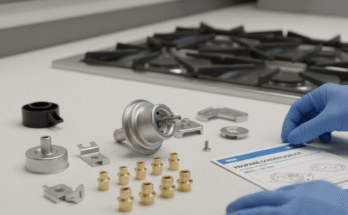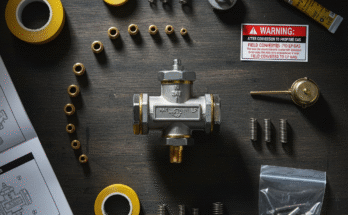The world of fishing is one of endless pursuit. You chase the perfect cast, the thrilling strike, and the joy of the catch. For many, the rod itself is simply a tool—just an extension of the arm. But for a growing number of anglers, the connection runs deeper. This connection extends to the very genesis of their equipment. They have discovered the rewarding and deeply personal craft of custom rod building. The simple, yet comprehensive, rod building kit is their gateway.Rod Building Kits
This is more than a mere DIY project. It is an immersion into the history, engineering, and art of fishing tackle. A custom-built rod offers an unparalleled connection to your sport and the water. It is a truly unique piece of gear. You can perfectly tailor it to your hand, your style, and your target species.
The Ancestry of the Angler’s Rod
To appreciate the modern kit, one must first look back. The fishing rod’s history is as long and winding as a river itself. The earliest simple sticks date back some 4,000 years. They were made from hazel or bamboo tied with horsehair line. The rod has been in constant evolution since then. The 17th and 18th centuries saw two major innovations. Line guides and the fishing reel transformed a pole into a sophisticated rod. Anglers in those days often built their own rods. They crafted their gear from woods like ash, hickory, and later, the revolutionary split cane bamboo.. Rod Building Kits
Deconstructing the Kit: What’s Inside?

A quality rod building kit is a curated collection of essential components. It is often designed specifically for a beginner. The goal is to successfully assemble a first functional, custom rod. The exact contents vary by kit type (spinning, casting, fly, etc.). However, the core elements always remain consistent.
1. The Rod Blank: The Soul of the Rod
This is the long, tapered shaft. It forms the backbone of your rod. The blank determines the rod’s ultimate performance characteristics. These include its length, power, and action.
- Materials: Modern kits typically include a blank made from graphite, fiberglass, or a composite blend.
- Graphite: This is lightweight and highly sensitive. It is ideal for techniques requiring you to feel subtle bites, like jigging. It generally offers a faster action.
- Fiberglass: This material is more durable, flexible, and forgiving. It tends to have a slower action. This is great for absorbing the shock of large fish or for techniques like crankbait fishing.
- Power (or Taper): This is the rod’s lifting strength. It ranges from Ultra-Light to Heavy. Power dictates the line and lure weight the rod can handle.
- Action: This describes where the rod bends. An Extra-Fast action bends only at the tip. It offers maximum sensitivity and fast hook-sets. A Slow action bends from tip to butt. This provides great shock absorption.
2. Guide Set and Tip Top
These are the rings that guide the fishing line along the blank. The kit will include a specific number of guides, varying in size. It also includes the tip top, the final guide at the very end of the rod. Correctly sizing and spacing these guides is a critical step.
3. Handle Assembly
This section ensures comfortable casting and a secure grip. Components typically include:
- Grips: These are most often made from natural cork or EVA, a high-density foam. Kits often provide these pre-reamed (inner diameter widened) to fit the specific blank.
- Reel Seat: This component securely holds your reel. They come in various styles (spinning, casting) and materials (graphite, aluminum).
- Butt Cap: This is a protective cap for the end of the handle. Rod Building Kits
4. Supplies and Adhesives
No rod is complete without the materials to hold it together. You also need supplies to make it look professional.

- Wrapping Thread: This is used to secure the guides and tip top to the blank. Kits usually include at least one spool of a specific size and color.
- Two-Part Epoxy: This is the essential adhesive for two jobs. First, it bonds the handle components to the blank (a thick, durable paste). Second, it creates a crystal-clear, hard protective coating over the thread wraps (a clear, self-leveling finish).
- Small Tools and Accessories: This may include a China marker (for marking the blank), mixing cups and sticks, and syringes for accurate epoxy measurement. Tip-top adhesive is also often included.
The Journey of the Build: Why Choose a Kit?
For the first-time builder, using a kit is the obvious choice. It is much easier than sourcing individual components.
Simplicity and Reduced Guesswork
The most significant advantage is the elimination of compatibility concerns. Building a custom rod from scratch requires many selections. You must choose a blank. Then you have to find the correct reel seat inner diameter. You also select guide sizes and count. Finally, you must ensure all parts are matched to the specific application. For example, you need durable, corrosion-resistant guides for a heavy saltwater blank. A kit removes this complicated process.
A Structured Learning Experience
Kits often come bundled with instructions. These can be a comprehensive manual or a link to online video tutorials. This structured approach is invaluable. You learn the fundamental processes without initial stress over component selection. These processes include finding the rod’s spine, reaming and adhering the grips, wrapping the guides neatly, and applying the two-part epoxy finish.
Cost-Effective Entry
You can build a rod on a budget without a kit. However, a good beginner kit is generally a cost-effective choice. It’s a cheaper way to acquire all the necessary components. It often includes a few basic tools, like a simple hand wrapper or drying motor, at a lower combined price than buying each item separately.
Beyond the Kit: Tools for the Trade
The kit contains the essentials. Still, a few specialized tools will make the process much smoother. They will also yield a more professional result. These are often sold as optional starter sets or sometimes included in premium kits.
- Rod Wrapper: This is a jig that holds the blank steady while you wrap the guides. For beginners, a simple hand wrapper is sufficient. Some thrifty builders can even improvise one with V-notched cardboard boxes or wood.
- Rod Dryer: This is a low-speed motor, typically 6-9 RPM. It slowly rotates the rod blank while the epoxy finish cures. This is arguably the most crucial optional tool. It prevents the epoxy from dripping. This ensures a glassy, professional look instead of an uneven finish.
- Reamers: These are conical tools. They are used to precisely widen the inner diameter of cork or EVA grips. This ensures a snug fit on the tapered rod blank.Rod Building Kits

The Final Cast: A Custom Rod Awaits
Rod building kits are a perfect blend of history, craft, and modern technology. They offer a tangible, rewarding project. This project culminates in a piece of gear perfectly suited to your fishing needs.
Your first custom rod may not be a masterpiece. There might be an uneven thread wrap or a tiny bubble in the finish. But it will be undeniably yours. It will be the rod you poured time, attention, and effort into. That personal connection will undoubtedly make the fish you catch with it feel all the more satisfying.




